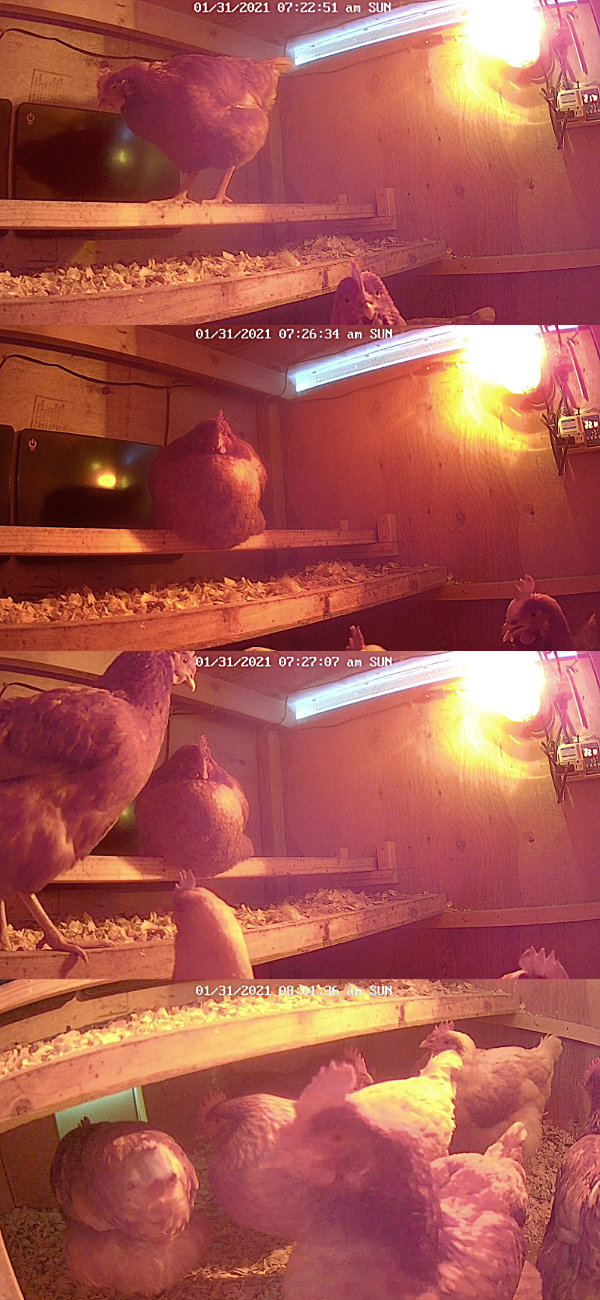Safe Chicken Coop Heater For Warm & Cozy (Mid Winter Update)
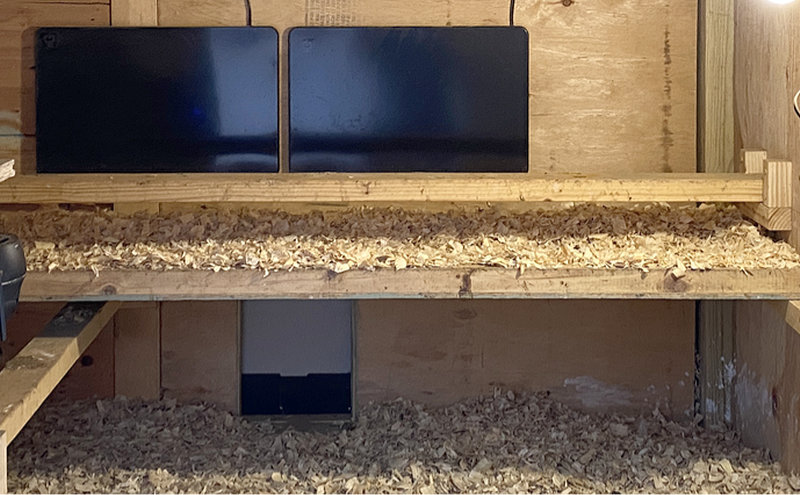
I did my research for chicken coop heat that’s safe. I first installed just one of these heaters. Awhile later I purchased a second heater for more distribution across the roost since my birds take up nearly the entire length at night. It is a radiant heat and is reportedly safe for applications such as this.
UPDATE – End of January, 19 below zero… (see below)
While I researched for a chicken coop heater, I had read numerous horror stories about the coop catching on fire (different heaters). When you think about it, you’ve got a perfect combustion setup just waiting for a flame… lots of dust, shavings, etc…
That’s what led me to this one. It doesn’t get hot enough to combust. It’s radiant heat. My chickens love it. It does look like a flat screen TV. I think they’ve been waiting for me to hook up the satellite :)
Chicken Coop Heat
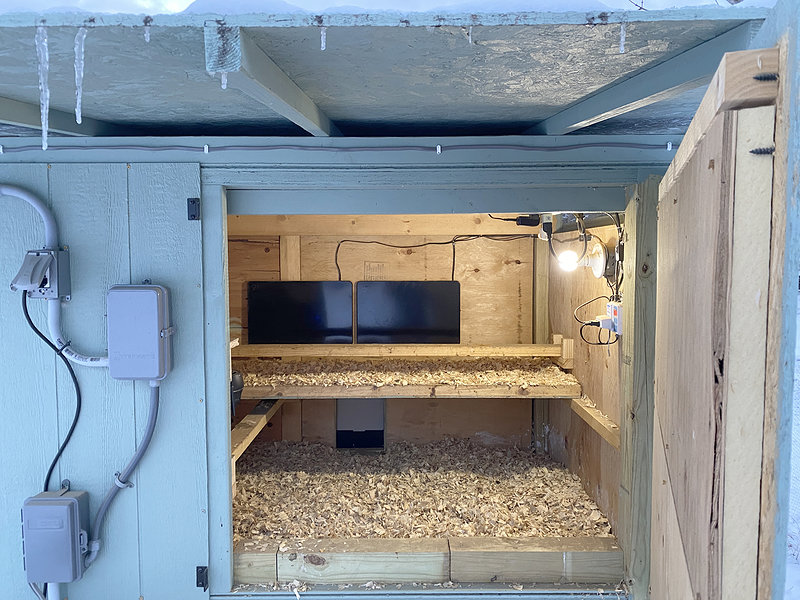
It has two heat settings. 100 watts / 200 watts. The switch has three positions: 100W – OFF – 200W.
There is no temperature control. So I purchased a temperature controller and repurposed it as a chicken coop heater temperature controller.
>> WILLHI WH1436A
(view on amzn)
You can adjust it to turn on and turn off at any temperature. I currently have it set to come on at 25 and off at 32. Although in reality chickens are going to be fine at those temperatures (but Mrs.J wants them to be warm and cozy). If it were me, I’d probably have it come on only when it got a bit colder than that. But that’s not a battle worth having just to save ~20-cents in electricity overnight ;)
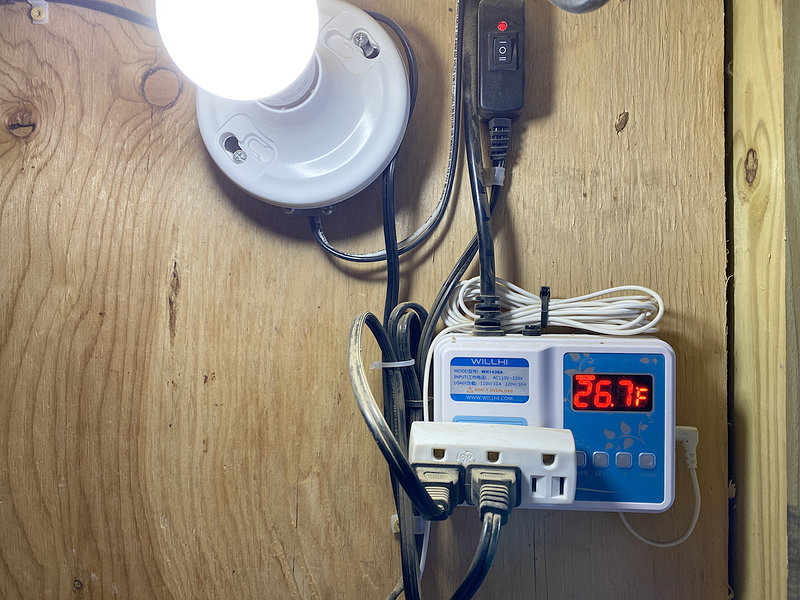
During the day we shut off the little toggle switch for each heater so it doesn’t run all day (on cold days) and waste electricity while they’re outside in the pen or wherever. Before sunset we turn them back on and let the temperature controller do its thing.
When I built my chicken coop, I told you how I insulated it:
[ Read: Chicken Coop Insulation | How I Am Insulating And What I’m Using ]
Well, it’s working out pretty good! We have had some fairly cold nights so far this early winter (around zero degrees). I’ve noticed that the heaters will generally add at least 20 degrees inside the coop – as long as their little coop door is closed. And that’s with vents up at the top too…not bad!
Oh, by the way, I generally leave the heaters on 100 watts (saves some electricity). But if it’s forecast to get real cold, I’ll switch it to 200 watts.
Note: Never close the chicken coop vents all the way – to keep it warmer inside – even when it’s cold. They NEED ventilation. They could actually get frost bit from excess moisture inside if you don’t vent. I do partially block the vents during winter (compared with summer), but you still need to be careful to leave enough ventilation.
As you would expect, the cold air readily comes in when their door is opened in the morning – although it still remains about 5 – 10 degrees warmer inside, depending.
We always get periods during the winter when we hit the 20’s below zero. Sometimes 30 below! We’ll see what happens when we get there…
One more thing… They say if you feed chickens cracked corn, they will stay warmer at night. Something about digestion. So that’s what we do:
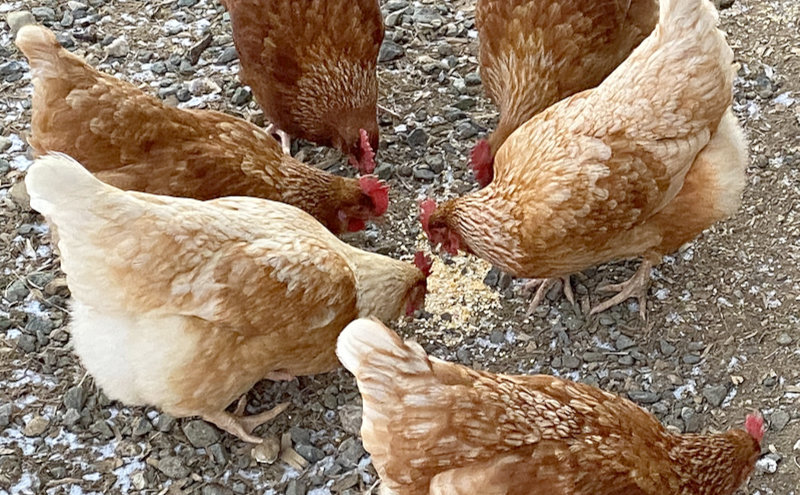
One more tip: When it’s really cold in the morning, you better get those eggs promptly – or they’ll freeze and crack! Ask me how I know…
UPDATE: The heart of winter – end of January
How to Heat Chicken Coop When It’s Below Zero Outside!
The outside temperature this morning was -19 degrees, as in below zero. C-c-ccold! Though typically expected up here during the heart of winter.
The subzero temperatures were forecast, so I know it was coming. I knew that I would have my two radiant chicken coop heaters set to “high” (200 watts each). But in addition, I screwed in a infrared heat lamp into the coop’s light fixture for added heat.
First, I had to replace the light bulb fixture itself from the original plastic type over to a porcelain fixture (should have done that in the first place). A heat lamp gets hot, so for safety I swapped the fixture. Anyway, do you want to know the results?
It was 19 below at around 7 AM this morning. I checked my chicken-cam to read the temp display inside the coop – which was 22 degrees! Nice! Heaters were adding 40 degrees (though I don’t want to calculate the electric bill).
Those birds would have gotten some nasty frost bite on their crowns. A few of them have already been bitten/nipped (slightly) but this would have been bad…
They were quite upset because I kept their coop door closed until the outside temperature warmed up to at least zero at around 9 AM. You should have heard them impatiently squawking…until I let them out as they sprinted down the ramp, apparently ‘starving’, right to their food! Spoiled birds…
Here’s a few photo snaps from chicken-cam this morning:
